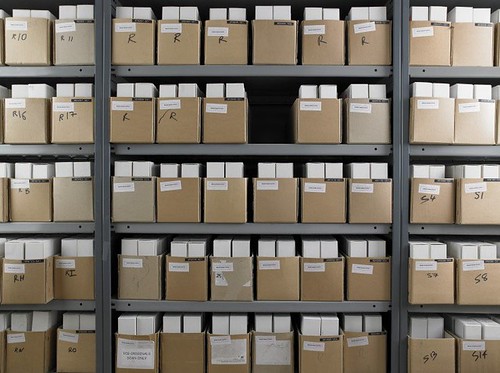USDA Digitizing 30 Years of Change Management Records
Client: USDA Rural Development

Case Study: Digitizing and Indexing 30 Years of Change Management Records
Background and Challenge
The Rural Development agency faced a significant challenge: over 100,000
archived Change Management (CM) documents spanning three decades were stored
in paper format. This vast archive, consisting of 27,000 distinct sets of CM
records, needed to be converted into a digital format to enhance security,
traceability, and process adherence. The project's goals included:
- Modernization: Transition from paper-based archives to a digital format for simplified retrieval and reporting.
- Scalability: Establishing an efficient and repeatable process to handle the conversion and indexing of 27,000 document groups.
- Accountability and Searchability: Ensuring the digitized records could be easily searched and traced to support decision-making and compliance needs.
The project required a systematic approach to scan, validate, and index these documents while maintaining high data integrity and quality standards.
Strategic Approach
The project team devised a robust process leveraging IT best practices and
tailored standard operating procedures (SOPs) for scanning and indexing
records. Key components of the approach included:
-
Developing SOPs: SOPs were created to standardize workflows for converting paper records into high-quality digital images and for organizing the scanned documents for simplified retrieval.
-
Iterative Implementation: Processes were tested and refined during early stages to optimize accuracy and efficiency.
-
Stakeholder Collaboration: Coordination with stakeholders ensured compliance with organizational standards and addressed specific use cases for document retrieval and reporting.
Solution Design
-
Scanning Process:
The scanning workflow included:- Utilizing designated scanning workstations with quality control measures to ensure image readability.
- Establishing a method to handle common scanning issues, such as double feeds and misaligned pages.
- Assigning batch numbers for each scanned document set to maintain traceability.
-
Indexing Workflow:
The indexing process ensured scanned documents were properly categorized and retrievable: -
Document IDs were validated and recorded in a centralized system for consistency.
- Cross-referencing with an authorized data dump ensured accuracy when Document IDs were incomplete or missing.
- A centralized database synchronized indexed records for enterprise-wide access.
- System Integration:
The solution integrated with existing IT infrastructure, allowing scanned documents to be securely stored and indexed while supporting automated syncing between local workstations and enterprise servers.
Implementation Highlights
- Process Standardization: The SOPs served as the foundation for consistent and efficient workflows, enabling the team to handle high volumes of records without compromising quality.
- Quality Control: A robust quality control process was established to address scanning and indexing errors, ensuring that digital copies were accurate representations of the original records.
- Efficient Collaboration: Processes were designed to maintain collaboration across teams while digitizing and centralizing the records.
Outcomes and Impact
The project delivered significant improvements across key metrics:
- Modernized Records Management: The paper archive was successfully digitized, eliminating reliance on physical storage and enabling rapid, remote access to records.
- Enhanced Traceability: Digitized records were indexed with unique identifiers, ensuring records could be easily traced through their lifecycle.
- Streamlined Retrieval: A searchable and centralized repository drastically reduced the time and effort required to retrieve documents.
- Process Adherence: By adhering to the established SOPs, the project ensured consistency and accuracy in scanning and indexing.
Lessons Learned
- Standardized Procedures Drive Efficiency: Clear, detailed SOPs provided a consistent framework that minimized errors and ensured scalability.
- Quality Control Is Crucial: Continuous monitoring and validation during scanning and indexing safeguarded the integrity of the digital records.
- Stakeholder Collaboration Ensures Success: Engaging stakeholders throughout the process enabled the team to address unique requirements and align solutions with organizational needs.
The successful digitization of 30 years of Change Management records showcases the power of well-designed processes and strategic implementation in modernizing legacy systems while ensuring accountability and traceability.
Technologies Used: OCR Project Management
Back to Portfolio